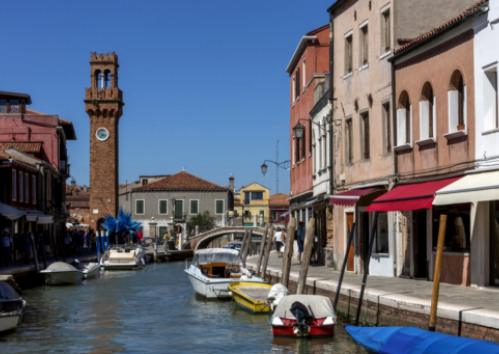Nestled in the Venetian Lagoon, Murano is a picturesque island renowned for its centuries-old tradition of glassmaking. Home to skilled artisans and world-renowned glass studios, Murano has become a beacon for art enthusiasts and travelers alike. From exquisite glass sculptures to intricate chandeliers, the island continues to captivate visitors with its dazzling creations. Join us on a journey to explore the enchanting world of Murano glass through a lens.

Famous Murano Glass Artists
Some of the most famous artists include Lino Tagliapietra, who is known for his innovative and intricate glass designs. Another prominent figure in the Murano glass scene is Archimede Seguso, whose work is characterized by its elegance and attention to detail. Other noteworthy artists include Dino Martens, Fulvio Bianconi, and Paolo Venini, all of whom have left a lasting impact on the world of glass art. These artists have helped to shape the reputation of Murano as a center for excellence in glassmaking, attracting visitors from around the globe to witness their creations firsthand.
Techniques Used in Murano Glassmaking
Murano, an island in the Venetian Lagoon of Italy, has been renowned for its exquisite glassmaking for centuries. The techniques used in Murano glassmaking are truly impressive and have been passed down through generations, maintaining the island's reputation as a hub for high-quality glass artistry.
One of the most well-known techniques used in Murano glassmaking is called "lampworking." This technique involves heating glass rods over a flame and then using various tools to shape the molten glass into intricate designs. Lampworking allows artists to create delicate and detailed pieces, such as figurines, beads, and intricate decorations.
Another popular technique used in Murano glassmaking is "glassblowing." This technique involves blowing into a molten glass blob through a tube to create a bubble, which is then shaped and molded into various forms using tools and molds. Glassblowing allows artists to create larger, more complex pieces such as vases, bowls, and sculptures.
Other techniques used in Murano glassmaking include "murrine," which involves creating intricate patterns by layering different colored glass rods and then cutting them into slices to reveal the design, and "filigree," which involves twisting and shaping colored glass rods to create intricate patterns within a larger piece.
Overall, the techniques used in Murano glassmaking require skill, precision, and creativity. The artists on the island continue to push the boundaries of glass artistry, creating unique and beautiful pieces that showcase the rich history and tradition of Murano glassmaking.
Modern Innovations in Murano Glass
These innovations have allowed them to create new and exciting pieces that still carry the essence of Murano's long-standing glassmaking tradition.
One of the most notable modern innovations in Murano glass is the use of 3D printing technology. This cutting-edge method allows glass artists to create intricate and detailed designs that were previously not possible by hand. By utilizing 3D printing, Murano glassmakers are able to produce unique and complex pieces that showcase the limitless possibilities of the medium.
Another innovation that has gained traction in Murano is the use of eco-friendly materials and processes. As environmental concerns continue to grow globally, many glass artists in Murano have turned to sustainable practices to create their pieces. From using recycled glass materials to implementing energy-efficient manufacturing techniques, these artists are leading the way in creating a more environmentally conscious approach to glassmaking.
Furthermore, Murano glass artists have also been experimenting with combining glass with other materials such as metal and wood to create striking and unconventional pieces. These cross-disciplinary collaborations have resulted in innovative designs that challenge traditional perceptions of Murano glass.
Overall, the modern innovations in Murano glass have brought a fresh perspective to this centuries-old art form. By embracing new technologies and materials, Murano glass artists are able to continue pushing the boundaries of what is possible with glassmaking while still honoring the rich history and tradition of the craft.
The Impact of Tourism on Murano Island
Tourism plays a significant role in the economy of Murano Island, bringing in countless visitors eager to witness the intricate art of glassmaking that the island is renowned for. With its proximity to Venice, Murano has become a popular day trip destination for travelers looking to experience the unique culture and craftsmanship that the island has to offer. The influx of tourists has had a profound impact on the traditional way of life on Murano, influencing everything from local businesses to the preservation of centuries-old artisan techniques. As more and more visitors flock to the island each year, the delicate balance between catering to the needs of tourists and preserving the authenticity of Murano's heritage becomes increasingly challenging. Despite these challenges, tourism has undoubtedly helped to bring global recognition to the island's talented glass artists and their remarkable creations.
